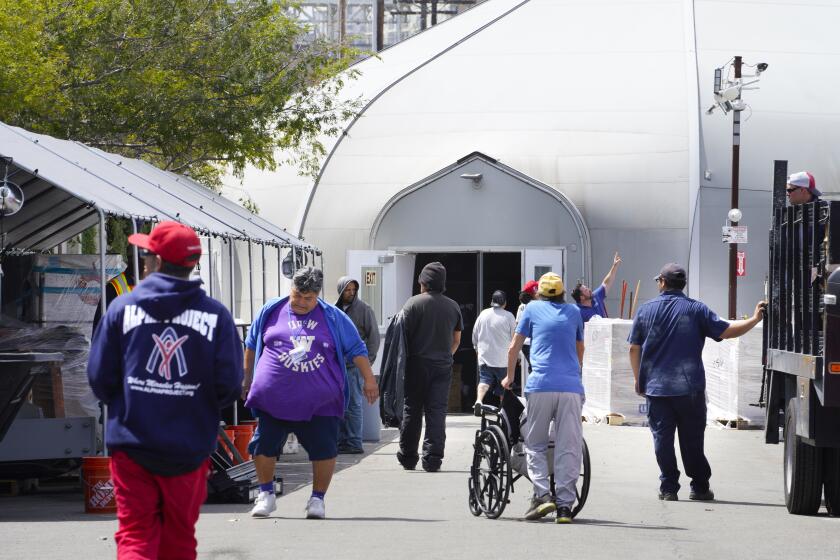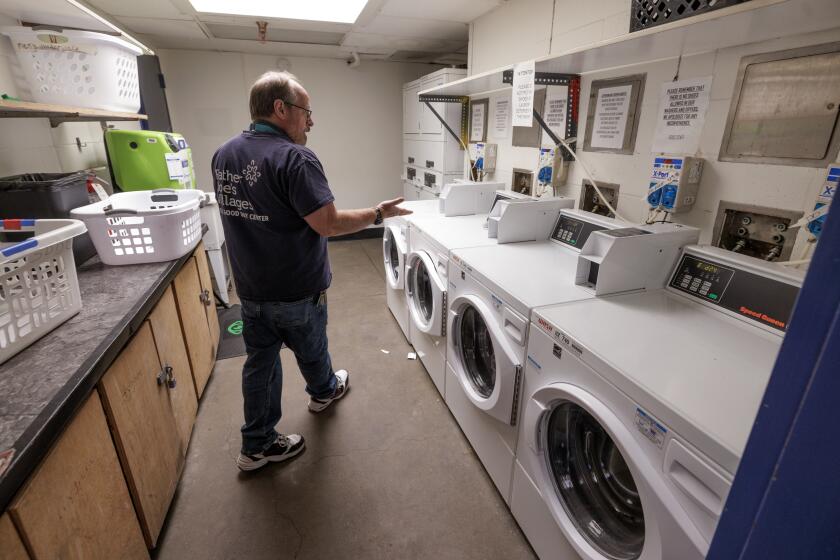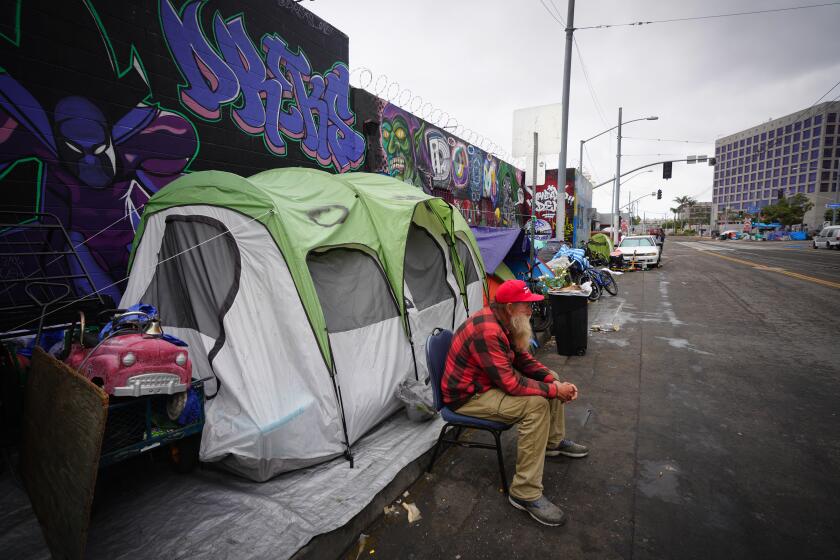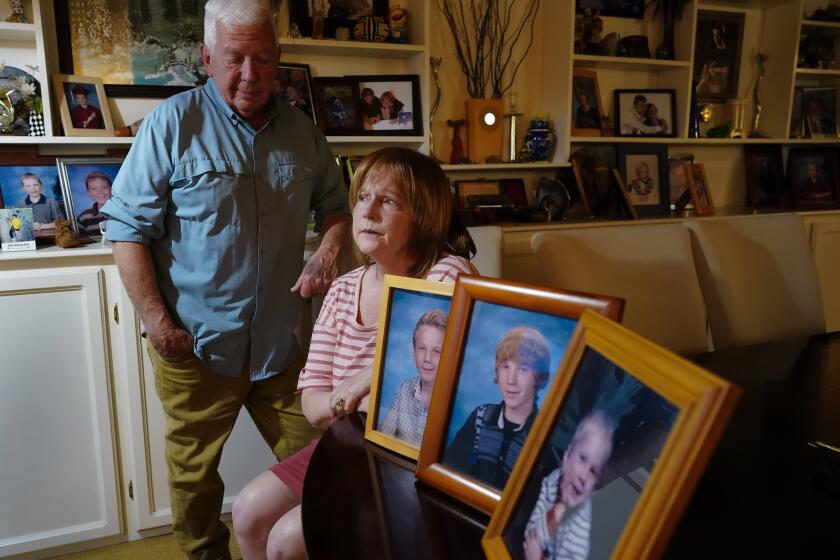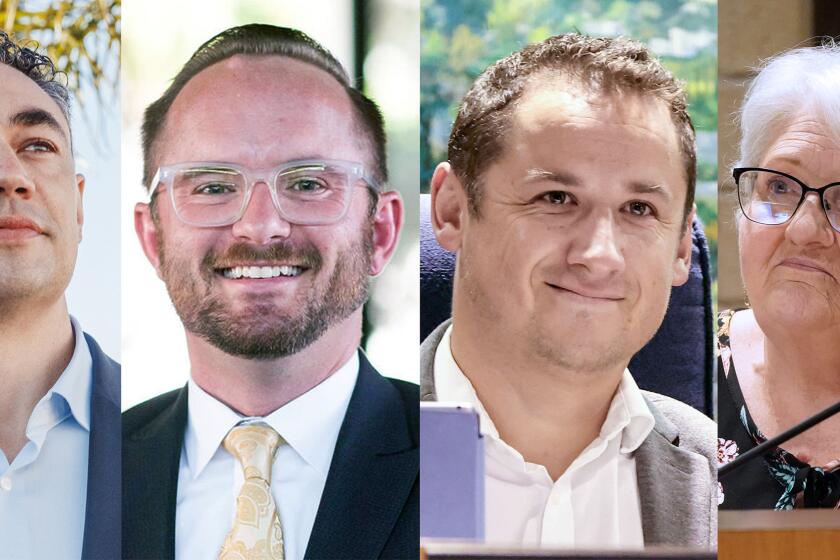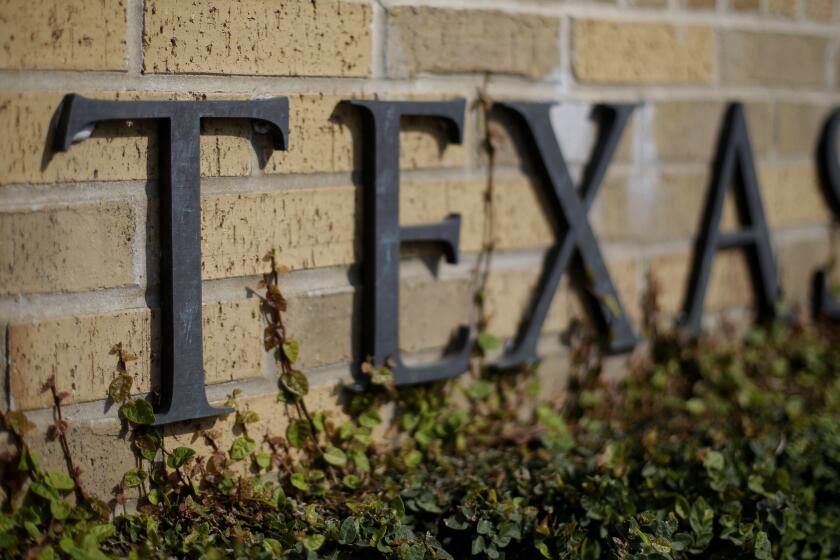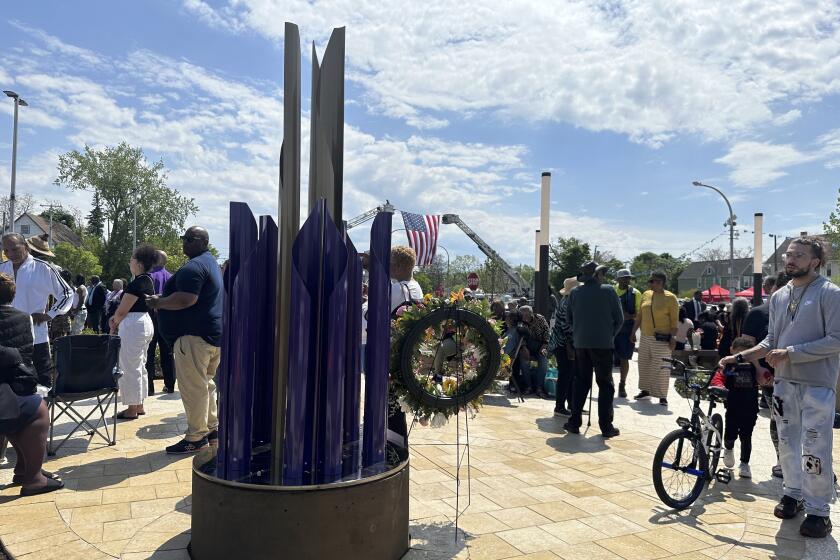‘She made certain that her city had the very best’: Hundreds mourn Joan Jacobs in a park bearing her name
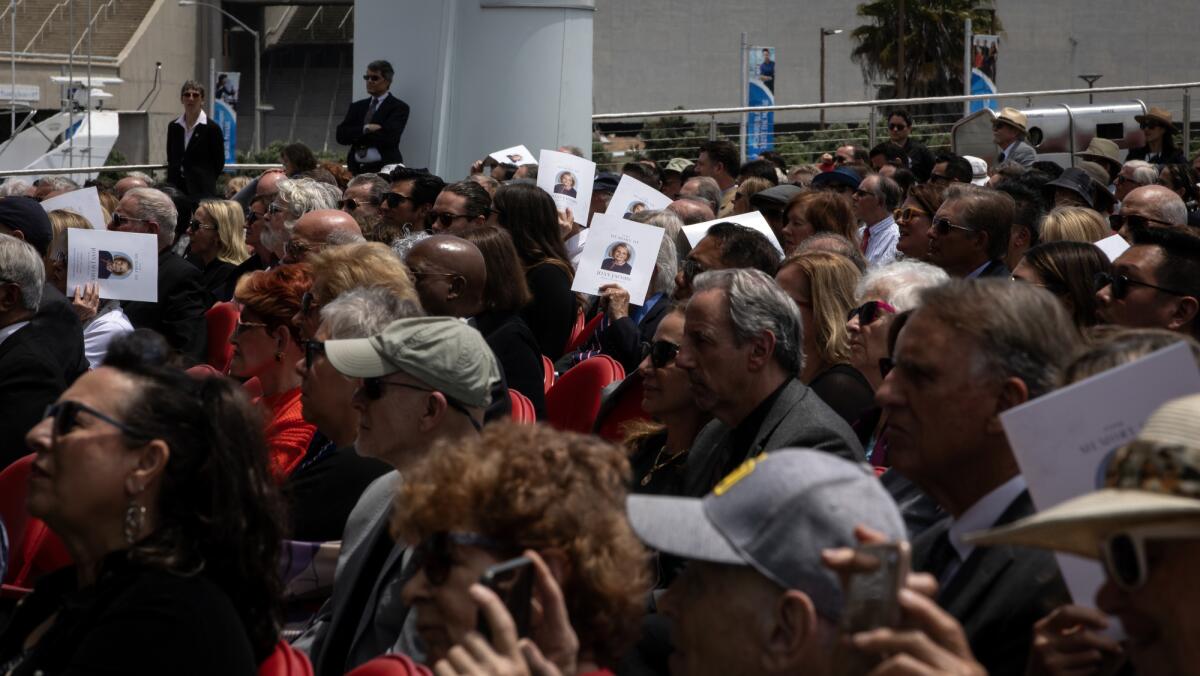
Dozens of relatives, friends and leaders shared story after story of the philanthropist’s generosity and endurance.
Decades ago, Irwin Jacobs turned down a teaching job at a new university in San Diego.
Jacobs was on the faculty at MIT and felt his future was on the East Coast. Yet the decision didn’t feel quite right. One day after work he returned, in a rainstorm, to the home his family rented.
His wife, Joan Jacobs, met him at the door and read the description of a house she wanted them to buy.
“Let’s go see it tomorrow,” Irwin Jacobs said.
“There’s only one problem,” his wife responded. “It’s in La Jolla.”
The exchange helped reshape San Diego history.
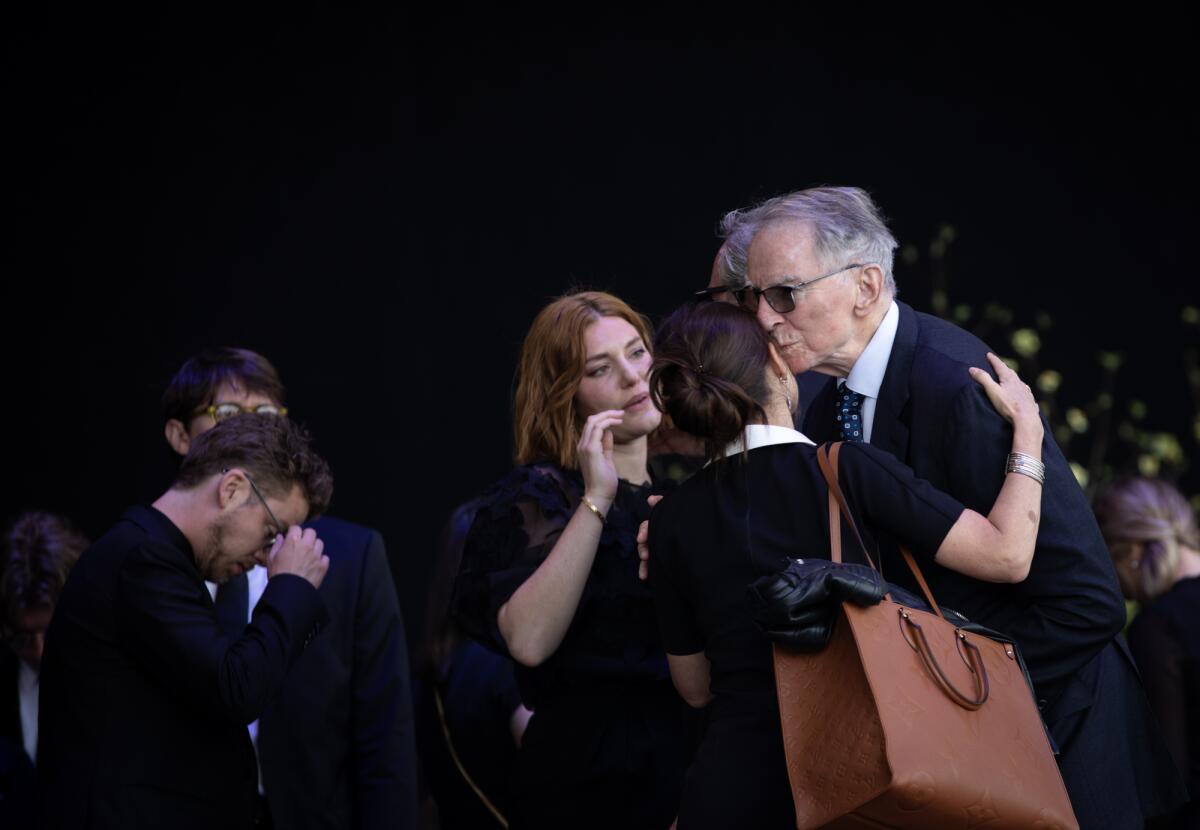
Joan Jacobs died May 6 after 91 years of life and 70 years of marriage, and her husband shared that memory Monday before hundreds of people who gathered for her public memorial. The service took place near the water at The Rady Shell, which is in a park named after the family and within miles of other institutions bearing the Jacobs name.
Irwin Jacobs did end up at UC San Diego before founding the technology giant Qualcomm, and the couple gave hundreds of millions of dollars to local arts, educational and scientific organizations. For two-plus hours, more than two dozen relatives, friends and leaders shared story after story of Jacobs’ generosity, endurance and attention to detail. Even the color of the Rady Shell seats, a bright “tropical red,” had been picked out by her.
“She made certain that her city had the very best,” said Kathryn Kanjo, CEO of the Museum of Contemporary Art San Diego.
The San Diego Symphony’s brass musicians performed and a band from the La Jolla Playhouse belted out “Can’t Take My Eyes Off Of You” from the musical “Jersey Boys,” two groups that wouldn’t be what they are without the Jacobs.
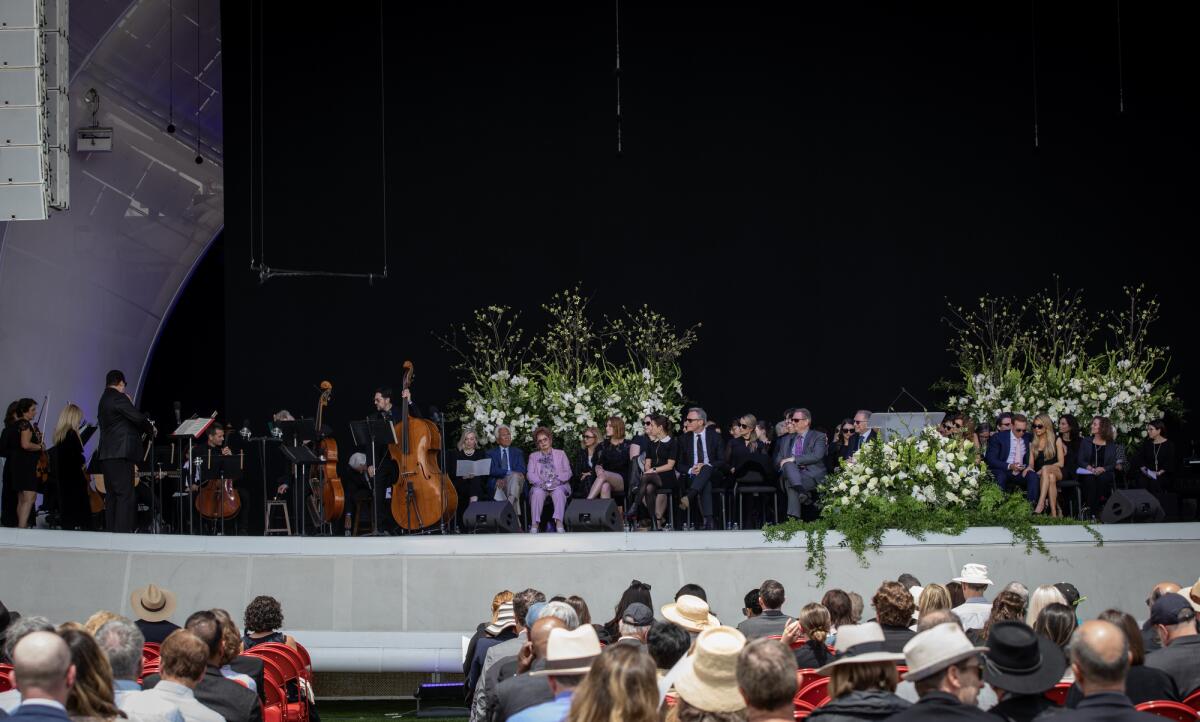
The family moved to La Jolla in the mid-1960s. The neighborhood had a history of discrimination against several ethnic groups, including Jews, and the couple’s first major philanthropic gift was for a local Jewish Community Center with the Beth-El congregation.
The Jacobs’ influence grew along with the size of their family. A slideshow included one image of Joan and Irwin Jacobs standing next to both Barack Obama and Bill Clinton followed by another of them on a couch overrun with children.
The Jacobs had four sons and more than a dozen grandchildren who packed Monday’s stage, and two great-grandchildren were born at UC San Diego Health’s Jacobs Medical Center.
Joan Jacobs helped fill that building with art, including Jeff Koons’ massive “Party Hat (Orange).” During the height of the pandemic, when only hospital staffers were allowed to enter, the couple nonetheless snuck inside to watch the sculpture’s installation.
Security reported them to Patty Maysent, CEO of UC San Diego Health. “What am I supposed to do, kick them out?” Maysent told the crowd, before adding, “I kept that secret until just now.”
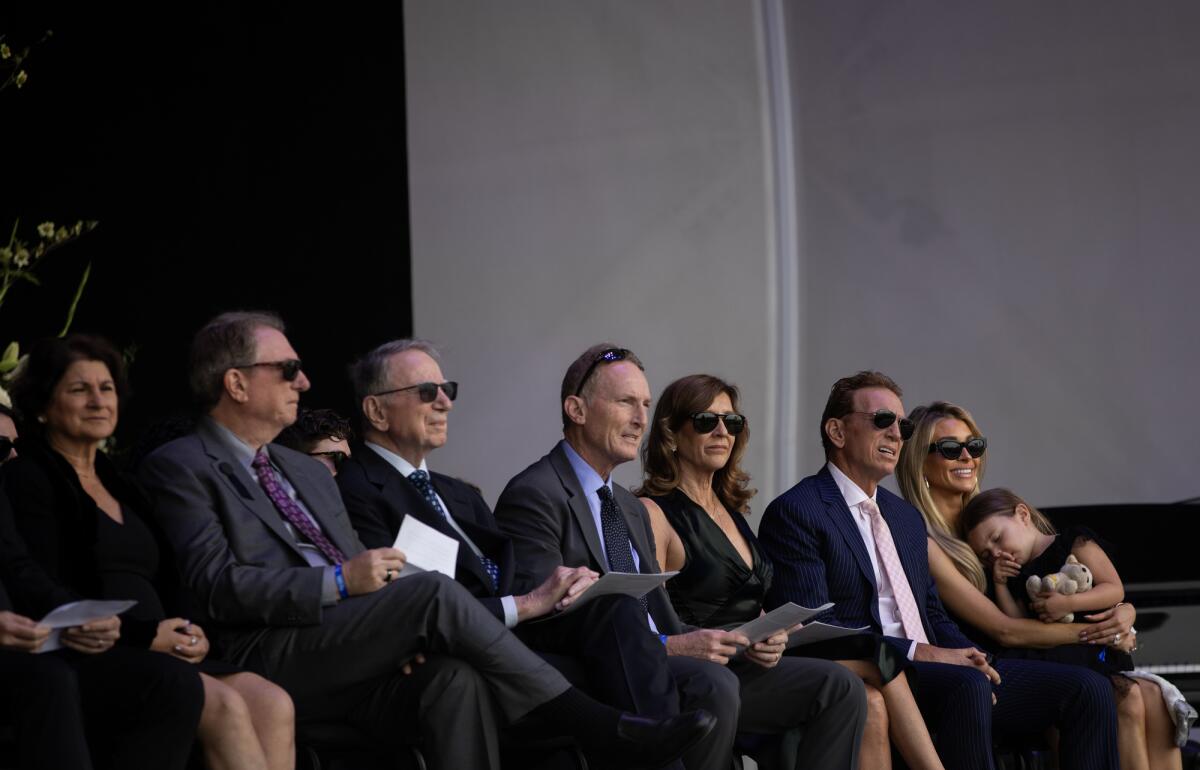
The family often traveled, but Joan Jacobs was not looking for straight vacations. She told a friend: “Don’t waste time at the pool or the beach.”
During one trip to Germany, when she wanted to see sculptures far from accessible roads, she rode a bike before falling and breaking her leg. On a tour in Spain, confined to a wheelchair from a different ailment, she still locked in on the art around her.
“Look at that incredible blue,” one son recalled her saying in the Guggenheim Museum Bilbao. “You can tell it’s Yves Klein.”
Relatives said their lives had been shaped by Jacobs.
U.S. Rep. Sara Jacobs, who introduced herself as the “shortest of the grandchildren,” said “Grandma Joan taught me that it was possible to be girly and feminine and love shopping and also be strong and opinionated and care about the world.”
Joan Jacobs unsurprisingly paid attention to how others treated their families.
She once told friends to invest in a stock. When someone asked what was so special about that company, Joan Jacobs said, “The CEO is very good to his mother.”
In late 2019, Jacobs was diagnosed with cardiac amyloidosis, a condition that weakens the heart. She was given only months to live. But while Jacobs had to spend more time lying down she continued on for years.
“At first I thought it was just her incredible will to live,” said her son Hal Jacobs. “But after watching and listening to her, I realized” that “she didn’t want to leave dad on his own.”
Recently she fell and hit her head. Doctors from Scripps and UCSD stepped in, and Jacobs looked stable enough in early May that her family thought she might return home.
Then Irwin Jacobs got calls last Monday after leaving the hospital: Joan Jacobs now needed a mask to breathe. He should come back.
When Martha Gilmer, CEO of the San Diego Symphony Orchestra, learned that Jacobs had died, she quickly told an audience at the Civic Theater.
The room gasped, she said.
“Everyone there grasped the enormity of the news.”
Staff writer Michael Smolens contributed to this report.
Top headlines by email, weekday mornings
Get top headlines from the Union-Tribune in your inbox weekday mornings, including top news, local, sports, business, entertainment and opinion.
You may occasionally receive promotional content from the San Diego Union-Tribune.

